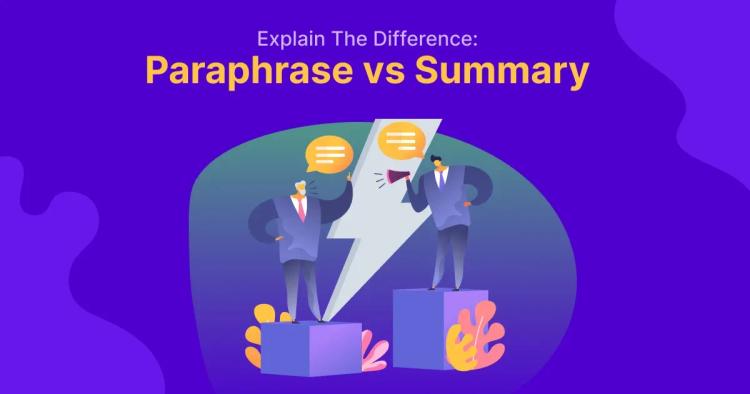Welcome, fellow wordsmiths and literary adventurers! Today, we embark on a journey into the heart of writing—a journey that begins not in the middle or at the end, but right at the start, with something small yet mighty: the preface. It's not just a page; it's an open door, a handshake between you and your reader, a chance to say, "Hey, let's go on this adventure together."
So, grab your pens and notebooks, and let's explore the magic of preface writing. In a world buzzing with stories and ideas, the preface is like a secret whisper before the grand reveal. It's the moment when an author steps out from behind the curtain and shares a piece of their heart with you.
As we dive into the importance of a preface, think of it as the compass that guides readers through the uncharted territory of your words.
ᴀᴅᴠᴇʀᴛɪsᴇᴍᴇɴᴛ
Importance of a Preface in Writing
Why does a preface matter? Well, think of it like this: Have you ever walked into a party where you don't know anyone? It can feel a bit awkward, right? A preface is like the host welcoming you at the door, introducing you to the other guests, and making you feel at home.
In the vast realm of writing, a preface acts as the tour guide, showing readers around the landscape of your thoughts and intentions. It's the friendly face that says, "Here's why I wrote this, here's what you're about to experience, and here's why it matters."
Without a preface, it's like starting a novel without an introduction—it's not wrong, but it lacks that personal touch, that connection between the storyteller and the audience.
But the magic doesn't stop there. A well-crafted preface sets the tone for the entire journey. It's the overture to the symphony of words that follows. It can make the difference between a reader eagerly flipping pages and one hesitating at the door.
The importance of a preface is in its ability to bridge the gap between author and reader, making the reading experience not just enjoyable but memorable.
Working on academic or grant writing? Check out our post on How to Write a Concept Paper for structured guidance.
What is the Preface?
Imagine a preface as the opening notes of a melody, setting the tone for the entire song. In the world of writing, a preface is like the author's warm welcome to readers. It's a few pages at the beginning of a book where the author talks directly to you, sharing insights, stories, and reasons behind the writing.
It's a personal touch, like a friendly guide inviting you into the story. A preface serves as a kind of map, giving you a hint about the journey you're about to embark on. It's where the author might share the inspiration behind the book, explain why they wrote it, or express gratitude to those who supported them along the way.
It's a unique space where the author's voice shines, adding a layer of connection between them and the reader.
Preface vs. Prologue vs. Foreword
Sometimes these bookish terms can get a bit tangled up. Let's clear the air.
The Preface is like the author's personal tour guide. It's written by the author, for the reader. Here, the author might share personal stories, inspirations, or the journey of creating the book.
A Prologue, on the other hand, is like the opening scene of a play. It sets the stage for the story, providing background or context. Unlike the preface, it's not directly from the author; it's more about the story itself.
A Foreword is like a recommendation letter from a friend. It's written by someone other than the author, usually an expert or a well-known figure. They give their perspective on why the book is worth reading, adding a layer of credibility.
So, in short, the preface is from the author, the prologue sets the scene, and the foreword is a friendly nod from someone else. Each has its unique role in preparing you for the adventure that lies ahead.
ᴀᴅᴠᴇʀᴛɪsᴇᴍᴇɴᴛ
What is the Purpose of a Preface?
Why do authors bother with a preface? Well, it's like having a backstage pass to a concert – you get to see the behind-the-scenes action. The purpose of the preface is to give readers a sneak peek into the author's mind.
It's where authors spill the beans on why they wrote the book, what inspired them, and sometimes even share a bit about their journey. Think of it as the author's way of saying, "Hey, reader, let me tell you a bit about the story you're about to dive into."
Sometimes, it's not just about the story; it's about the author's connection with the readers. Authors might express their gratitude, acknowledging the people who helped or inspired them along the way. It's like a big "thank you" note, making the readers feel like they're part of something special.
Types of Prefaces
Prefaces come in different flavors, like ice cream. Each type serves a unique purpose, adding its own special ingredient to the literary mix.
Autobiographical Preface: This is like the author opening up their diary. In an autobiographical preface, writers share snippets of their own life, giving readers a personal connection to the story. It's like having a heart-to-heart chat with the author before jumping into the book.
Explanatory Preface: Imagine having a guide before embarking on a journey. An explanatory preface is like that guide, providing background information, context, or even definitions for things readers might encounter in the book. It's the author saying, "Let me help you understand this world I've created."
Critical Preface: This is the author putting on their critic hat. In a critical preface, writers might discuss the themes, symbols, or the artistic choices they made in the book. It's like having a director's commentary on a movie – extra insights into the creative process.
Gratitude Preface: Picture a thank-you card at the beginning of a book. In a gratitude preface, authors express their thanks to the people who played a role in the creation of the book. It's a warm gesture, like acknowledging the supporting cast in a movie.
Understanding these types helps authors choose the right flavor for their preface. It's not just a formality; it's a way for authors to set the mood, build a connection, and guide readers into the enchanting world they've crafted.
How Do You Write a Preface: Tips for Crafting an Engaging Preface
Understand Your Audience: Imagine sitting down with your readers. Who are they? What do they enjoy? Knowing your audience helps you tailor your preface to connect with them. Are they mystery lovers, history buffs, or perhaps fans of heartwarming stories?
Define Your Purpose: Ask yourself, "Why am I writing this preface?" Is it to share the inspiration behind your story, express gratitude, or provide essential background? Knowing your purpose helps you shape your words with intention.
Craft a Compelling Opening: Picture your preface as the front door to your literary house. Make sure it's inviting! Start with something captivating – a question, a quirky fact, or a short anecdote. The goal is to grab your reader's attention from the very beginning.
Be Genuine: Your preface is like a personal letter to your readers. Be yourself. Share your real thoughts, emotions, and the journey that led you to write this book. Authenticity creates a connection that readers will appreciate.
Keep it Concise: While pouring your heart into words is essential, remember to keep it brief. A preface is like an appetizer – it should leave readers eager for the main course. Aim for a balance between depth and brevity.
Inject Personality: Don't be afraid to let your unique voice shine. Your readers want to connect with you, the person behind the words. Whether you're witty, reflective, or adventurous, let your personality shine through.
Create Intrigue: Think of your preface as a movie trailer. Give your readers a taste of what's to come without revealing the entire plot. Leave them curious, eager to turn the page and dive into the story.
Edit and Revise: Just like a sculptor refining a masterpiece, take the time to polish your preface. Check for any awkward sentences, typos, or areas where you can enhance clarity. A well-edited preface reflects the care you've put into your entire work.
Before finalizing your preface, run it through our free Grammar Checker to catch any mistakes and improve clarity.
ᴀᴅᴠᴇʀᴛɪsᴇᴍᴇɴᴛ
Examples of Effective Prefaces
Classic Literature Prefaces
Charles Dickens – "A Tale of Two Cities": Dickens masterfully weaves historical context into his preface, setting the stage for the turbulent times in which the story unfolds. His words create a vivid backdrop, enhancing readers' understanding and engagement.
Jane Austen – "Pride and Prejudice": In her preface, Austen offers a glimpse into the society of her time. Her wit and insight not only provide context for the story but also establish a connection between the reader and the author's keen observations of human nature.
Modern Author Prefaces
j J.K. Rowling – "Harry Potter and the Philosopher's Stone": Rowling's preface is like a magical doorway into the wizarding world. She shares the origins of Harry's story, making readers feel like they're part of the journey. Her warmth and enthusiasm create an instant bond with the audience.
Chimamanda Ngozi Adichie – "Half of a Yellow Sun": Adichie's preface is a heartfelt reflection on her personal connection to the story's historical backdrop. Her sincerity and emotional depth set the tone for a narrative that goes beyond the pages, resonating with readers on a profound level.
In studying these examples, notice how these authors use their prefaces not just as introductions but as bridges connecting them to their readers. It's a personal touch that transforms the act of reading into a shared experience, making the journey through the pages all the more meaningful.
If you are writing a research-based book, don’t miss our guide on How to Write Footnotes.
FAQs
How to Write a Book Preface?
Writing a book preface is like introducing a dear friend to the world. Start by sharing why you wrote the book, express your gratitude, and give readers a taste of what's to come. Keep it personal, genuine, and concise.
How to Write a Preface for Thesis?
Crafting a thesis preface involves setting the stage for your academic masterpiece. Clearly state the purpose of your thesis, acknowledge those who contributed, and provide a brief overview of your research journey. Keep it formal, focused, and academically precise.
How to Write Preface of a Project Report?
The preface of a project report is your project's opening statement. Briefly introduce the project, outline its objectives, and express gratitude to those who supported you. Maintain a professional tone and highlight the significance of the project.
What is an Example of a Preface?
A classic example of a preface is found in "To Kill a Mockingbird" by Harper Lee. In her preface, Lee shares insights into her small-town childhood, setting the tone for the novel and providing a glimpse into the world that inspired her masterpiece.
How Do You Write a Good Preface?
To craft a good preface, start with a compelling opening, understand your audience, and define your purpose. Be genuine, inject your personality, and maintain a balance between depth and brevity. Regularly revise, consider reader feedback, and, if possible, seek advice from fellow writers to refine your preface to perfection.
ᴀᴅᴠᴇʀᴛɪsᴇᴍᴇɴᴛ
Conclusion
In the intricate dance of preface writing, authors have the power to captivate readers from the very beginning. Understanding the nuances of this art, combined with the assistance of tools like Copychecker, ensures that your preface not only introduces your work but leaves a lasting impression.
So, go ahead, weave your words with care, and let your preface be the welcoming embrace that invites readers into the enchanting world you've created.
Want to make sure your preface is 100% original? Try our Plagiarism Checker — trusted by thousands of authors and editors.







